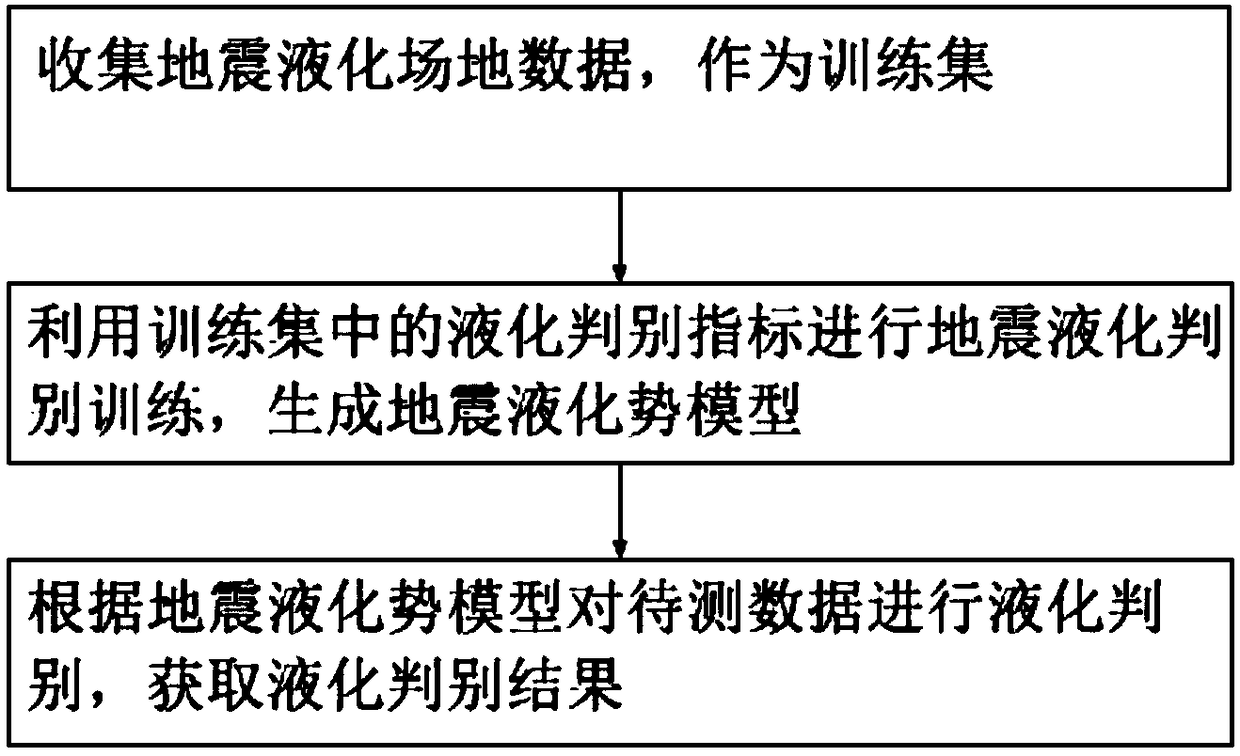A method for distinguishing seismic liquefaction and a seismic liquefaction potential model
A discrimination method and technology for liquefaction sites, applied in neural learning methods, biological neural network models, design optimization/simulation, etc., can solve problems such as missing index data, redundancy, and inconsistency in the definition of liquefaction discrimination indexes
- Summary
- Abstract
- Description
- Claims
- Application Information
AI Technical Summary
Problems solved by technology
Method used
Image
Examples
Embodiment 1
[0035] Embodiment 1 of the present invention provides a method for discriminating earthquake liquefaction, such as figure 1 As shown, the method includes the following steps:
[0036] Collecting seismic liquefaction site data as a training set, said seismic liquefaction site data including liquefaction discriminant indicators;
[0037] Use the liquefaction discrimination indicators in the training set to conduct deep learning seismic liquefaction discrimination training to generate a seismic liquefaction potential model;
[0038] According to the seismic liquefaction potential model, the liquefaction discrimination is carried out on the measured data, and the liquefaction discrimination results are obtained.
[0039] The invention provides an earthquake liquefaction discrimination method. The original data used in the invention include 382 cases of standard penetration test site data including China and the United States. Among them, the US liquefaction site database compreh...
Embodiment 2
[0041] Embodiment 2 of the present invention provides a method for discriminating earthquake liquefaction, which is basically the same as that of Embodiment 1, the difference is that, as image 3 As shown, using the training set for deep learning seismic liquefaction discrimination training, the generation of seismic liquefaction potential model includes:
[0042] The liquefaction discrimination indicators in the training set are used as the data of the input layer, among which there are 12 liquefaction discrimination indicators, which are magnitude (Mw), horizontal peak acceleration (PGA), critical depth of liquefaction (ds), and groundwater depth (dw) , the overlying total stress (σ v ), the overlying effective stress (σ v ’), equivalent clean sand corrected standard penetration number ((N1) 60CS ), fine particle content (FC), soil shear stress reduction factor (τ d ), overlying pressure correction factor (K σ ), the magnitude correction factor (MSF), and the soil cyclic...
Embodiment 3
[0047] Embodiment 3 of the present invention provides a seismic liquefaction discrimination method, which is basically the same as Embodiment 2, except that the number of nodes in each hidden layer is 7, 3, 4 and 3 respectively. By adjusting the number of nodes in each layer of the hidden layer, the systematic error of the network can be reduced, and the training time of the network can be kept short, the optimal point can be easily found during training, and the probability of "overfitting" in the training process can be reduced. When the number of nodes is adjusted The effects of the above nodes cannot be achieved during adjustment.
PUM
 Login to View More
Login to View More Abstract
Description
Claims
Application Information
 Login to View More
Login to View More - R&D
- Intellectual Property
- Life Sciences
- Materials
- Tech Scout
- Unparalleled Data Quality
- Higher Quality Content
- 60% Fewer Hallucinations
Browse by: Latest US Patents, China's latest patents, Technical Efficacy Thesaurus, Application Domain, Technology Topic, Popular Technical Reports.
© 2025 PatSnap. All rights reserved.Legal|Privacy policy|Modern Slavery Act Transparency Statement|Sitemap|About US| Contact US: help@patsnap.com



